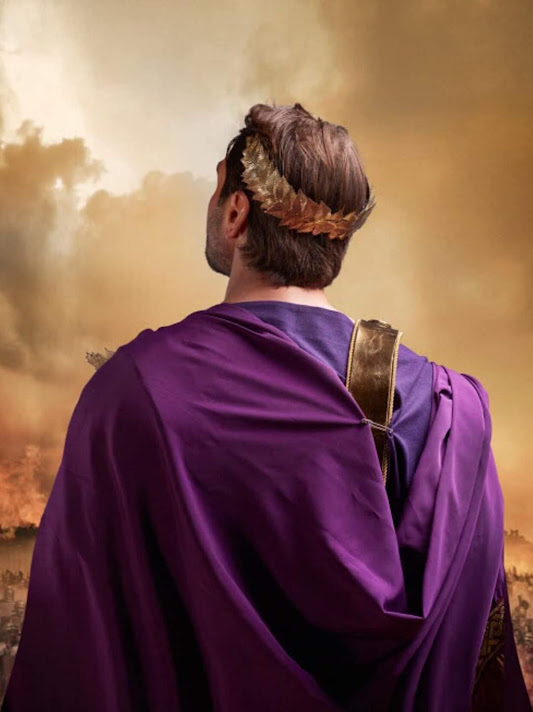Purple throw - the imperial color:
There's a reason purple is known as the color of royalty. It was once very rare and difficult to extract, which made it expensive to own.
The ancient Romans discovered color when the Roman Empire annexed eastern territories into modern Lebanon and Israel/Jerusalem.. It was in the ancient Phoenician city of Tyro, the birthplace and shopping center of the Purple Tyro.
The purple, the name and the color, comes from a dye made from the mucousglands of a tropical sea snail, the murex (porfira in Greek, purple in Latin).
It is made from a species of snail known as Bolinus brandaris. The dye was so rare it was worth its weight in gold. Owning a purple wool cart would cost what the average citizen earned in a year. Due to rarity and price, it was only accessible and used by the rich.
Throwing purple (Purple), also known as royal purple, imperial purples, or imperial dye, is a natural reddish-purple dye. It is secreted by several species of predatory sea snails in the family Muricidae, rock snails originally known as 'Murex' In antiquity, the extraction of this dye involved tens of thousands of snails and substantial work, and as a result, the dye was highly valued.
The dye is created from three types of sea snails found on this Israeli coast, the spiny-murex dye (Murex brandaris); banded-murex (Murex trunculus), and rock-shell (Murex haemastoma). Murex striped dye is the most abundant and represents most dyes.
Purple throw may have been first used by the ancient Phoenicians as early as 1570 AD. C. It has been suggested that the name Phoenix itself means "land of purple". The dye was highly appreciated in antiquity because the color did not fade easily, but became brighter with weather and sunlight. It came in several shades, the most precious being the colored blood clothed black
The purple arrow may have been discovered as early as during the Minoan civilization. Alexander the Great, when he gave imperial audiences as Emperor of Macedonia; the emperor of the Seleucid Empire; and the kings of Ptolemaic Egypt all wore purple. The imperial clothes of the Roman emperors were of purple stripe cut in metallic gold thread. The insignia of office for a Roman senator was a purple stripe on his white robe. The purple throw continued to be in use by the emperors of the Eastern Roman Empire until its final collapse in 1453 AD. Today it is used by senior officials of the Catholic Church.
Because it was extremely tedious to make, the purple shot was expensive: Theopompus historian of the 4th century BC. C., reported, "The purple color for the dyes picked up its weight in silver in Colofon" in Asia Minor. The expense meant that textiles dyed purple became status symbols, the use of which was restricted by law. The highest-ranking Roman magistrates wore a praetexta toga, a white toga embroidered in purple tirio. The even more sumptuous picta toga, solid purple stripe with gold thread trim , was worn by generals celebrating a Roman triumph.
Introduction: The allure of purple, often hailed as the color of royalty, transcends mere aesthetics. In antiquity, this regal hue was a symbol of wealth and power, owing its rarity and prestige to a meticulous extraction process. Let's unravel the imperial journey of purple, a color synonymous with opulence. Discovery in the Ancient Roman Empire: The vibrant history of purple unraveled as the Roman Empire expanded its territories, enveloping regions that would later become modern Lebanon and Israel, including the revered city of Jerusalem. However, it was in the ancient Phoenician city of Tyre that the secrets of the imperial hue were unlocked. Tyre, a bustling hub known as the birthplace and shopping center of the Purple Tire, played a pivotal role in the discovery and production of this prestigious color. Purple Tire: Gateway to Royalty: The name and essence of purple find their roots in a dye crafted from the mucous glands of a tropical sea snail known as the murex. In Greek, the snail is called "porfira," while in Latin, it is synonymous with the color purple. The process of extracting this dye was an intricate art, involving a series of steps to obtain the rich, deep hue that would come to symbolize imperial status. Rare and Expensive: The Essence of Royalty: The rarity of the murex dye made purple a luxury reserved for the elite. The difficulty in obtaining the dye, combined with the labor-intensive extraction process, elevated the cost of this regal color. As a result, owning anything dyed in purple became a status symbol, a tangible display of wealth and influence. Legacy and Symbolism: Purple's association with royalty persisted through the ages, leaving an indelible mark on history and culture. Monarchs, emperors, and other figures of authority adorned themselves and their surroundings with this majestic hue. legacy of purple as a symbol of power endures, a testament to its historical significance and enduring appeal. Conclusion: The journey of purple, from the depths of the Mediterranean Sea to the palaces of ancient rulers, is a tale of rarity, craftsmanship, and prestige. As we unravel the imperial elegance of this regal color, we appreciate not only its visual splendor but also the cultural and historical significance that has made it an enduring symbol of opulence and authority. The purple throw, once a rare possession, continues to captivate and adorn, weaving a thread of royal legacy through the fabric of time.
Introduction:
The allure of purple, often hailed as the color of royalty, transcends mere aesthetics. In antiquity, this regal hue was a symbol of wealth and power, owing its rarity and prestige to a meticulous extraction process. Let's unravel the imperial journey of purple, a color synonymous with opulence.








No comments:
Post a Comment